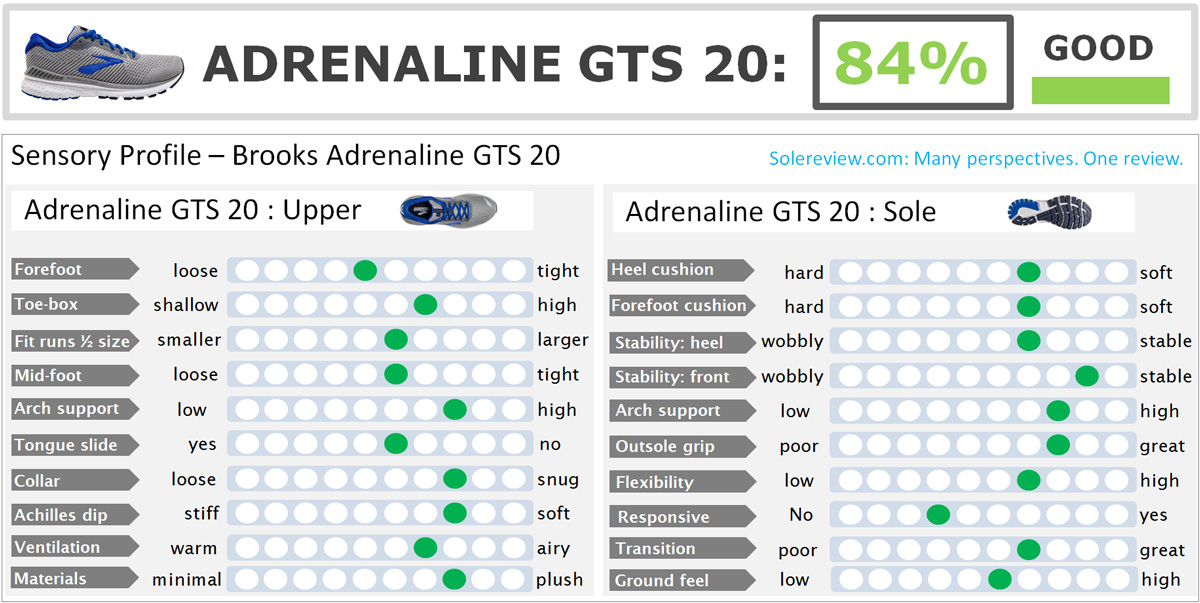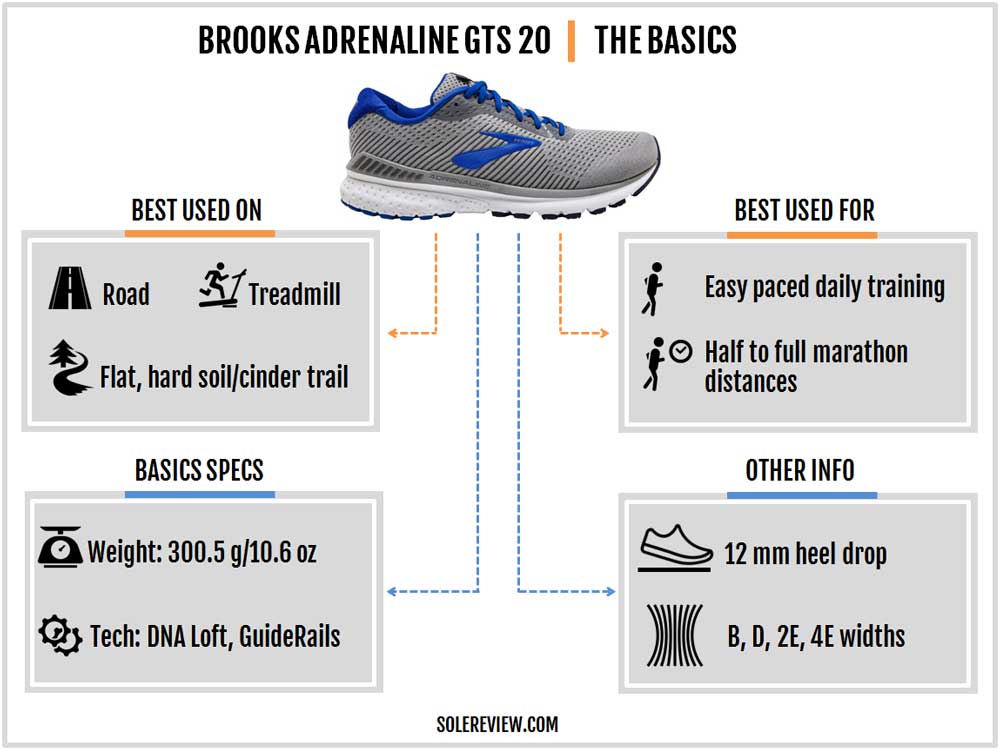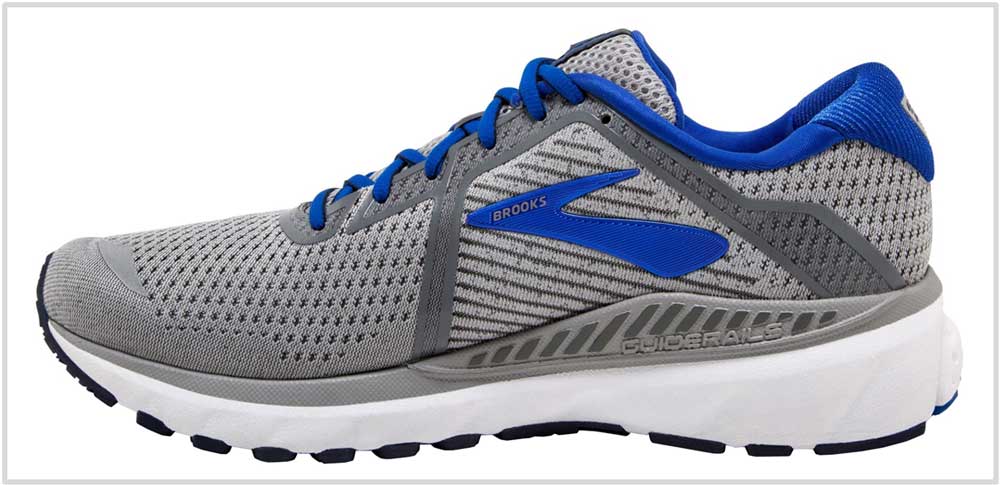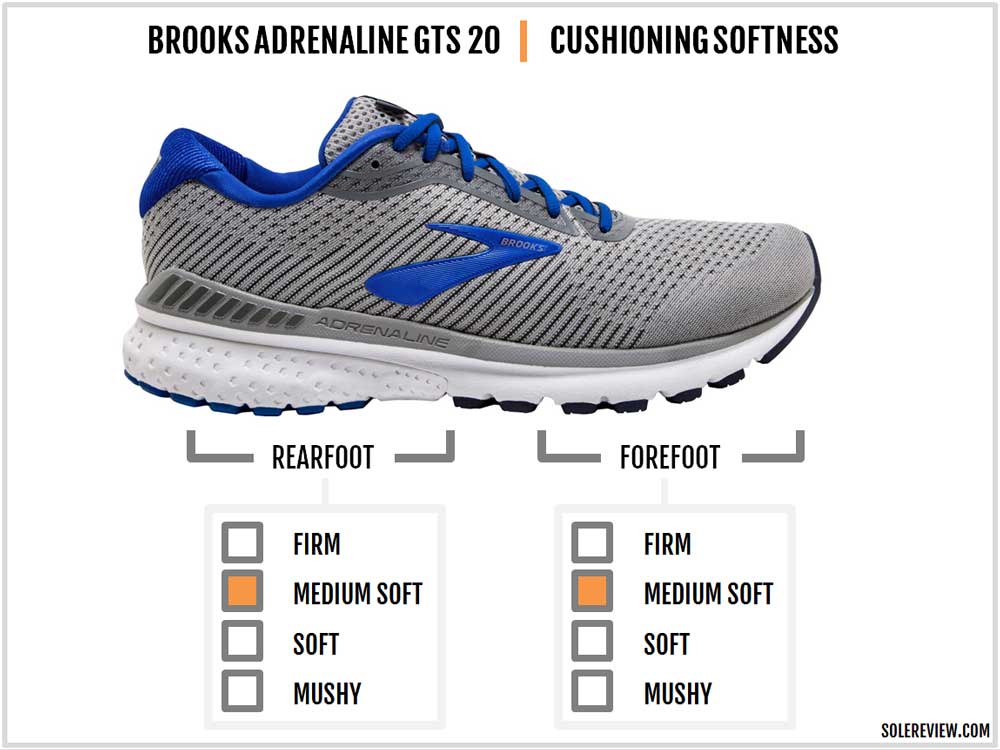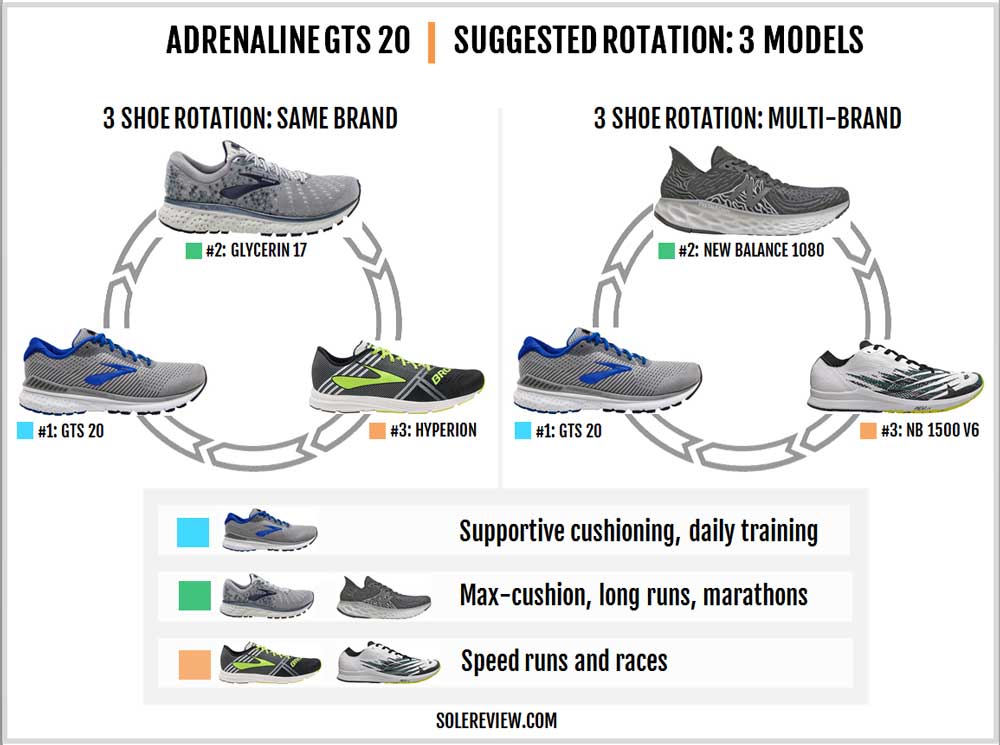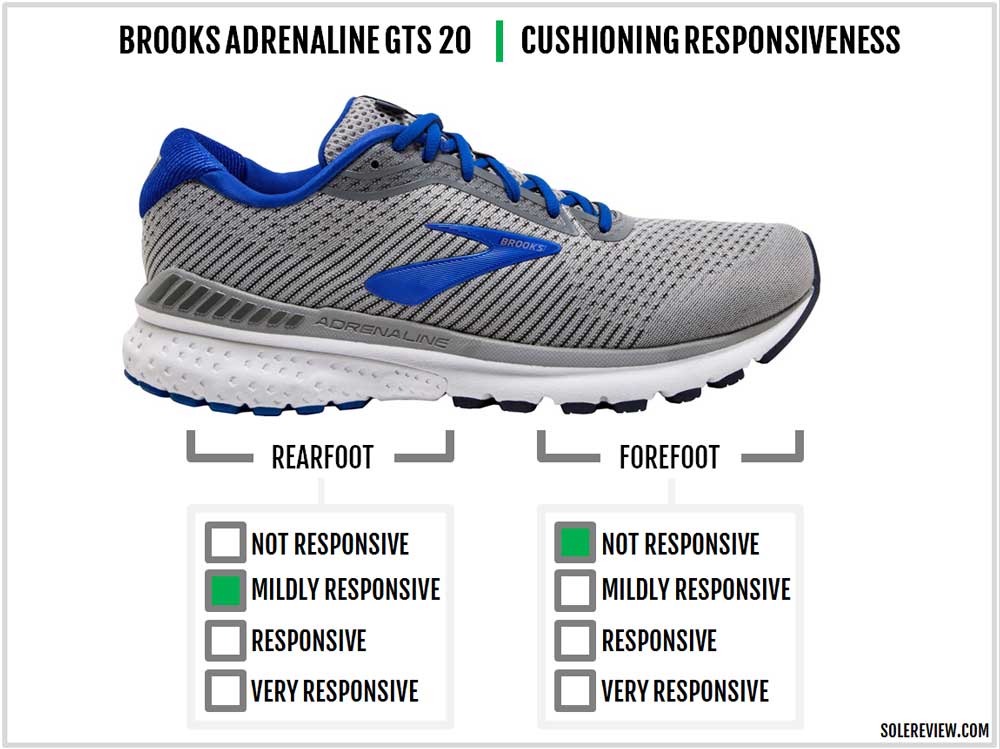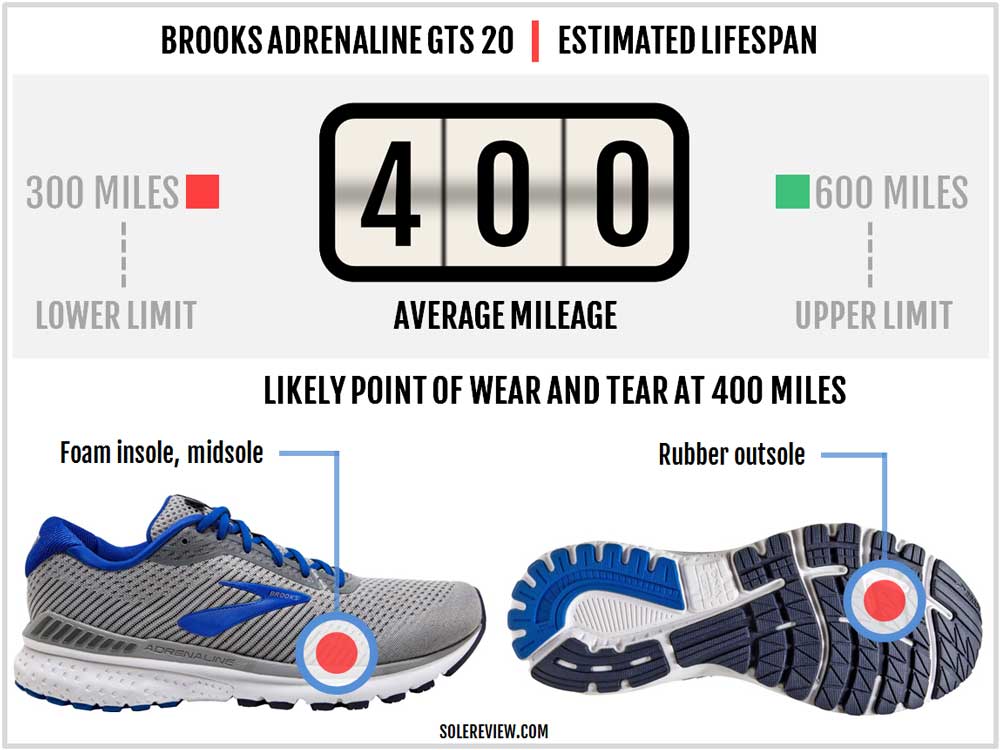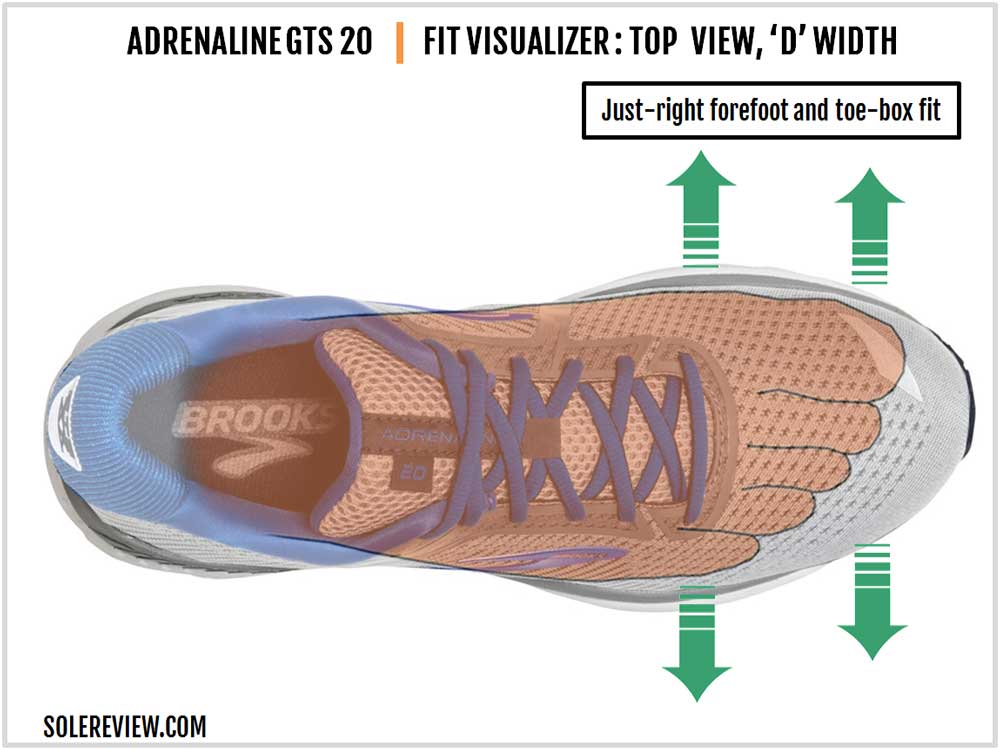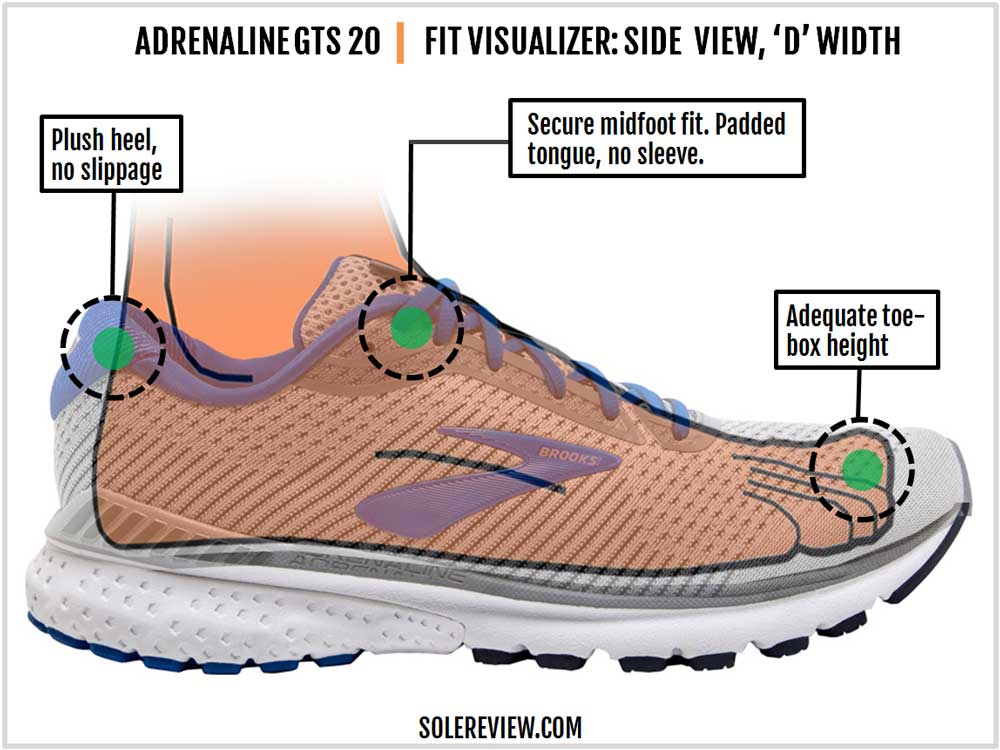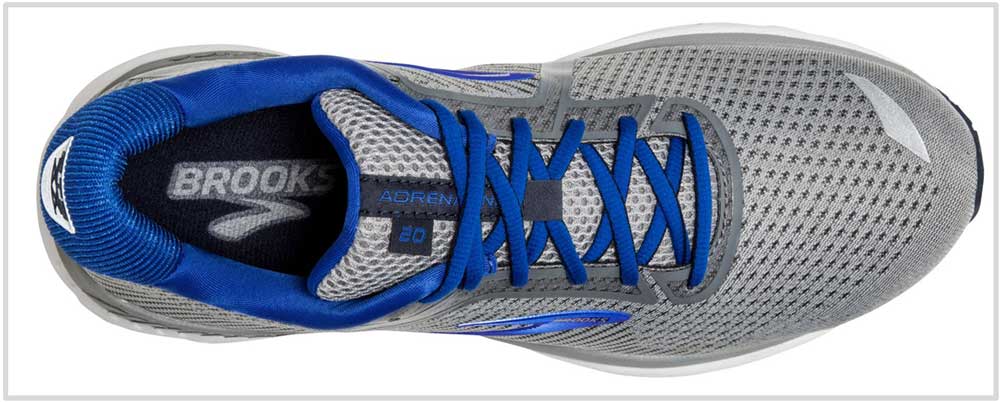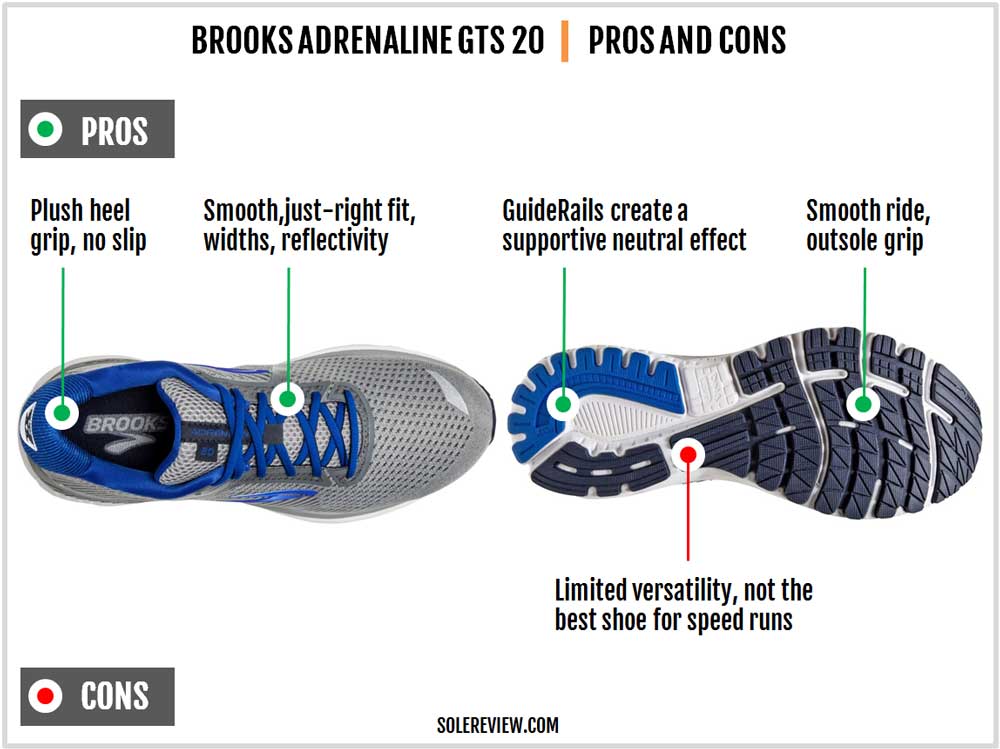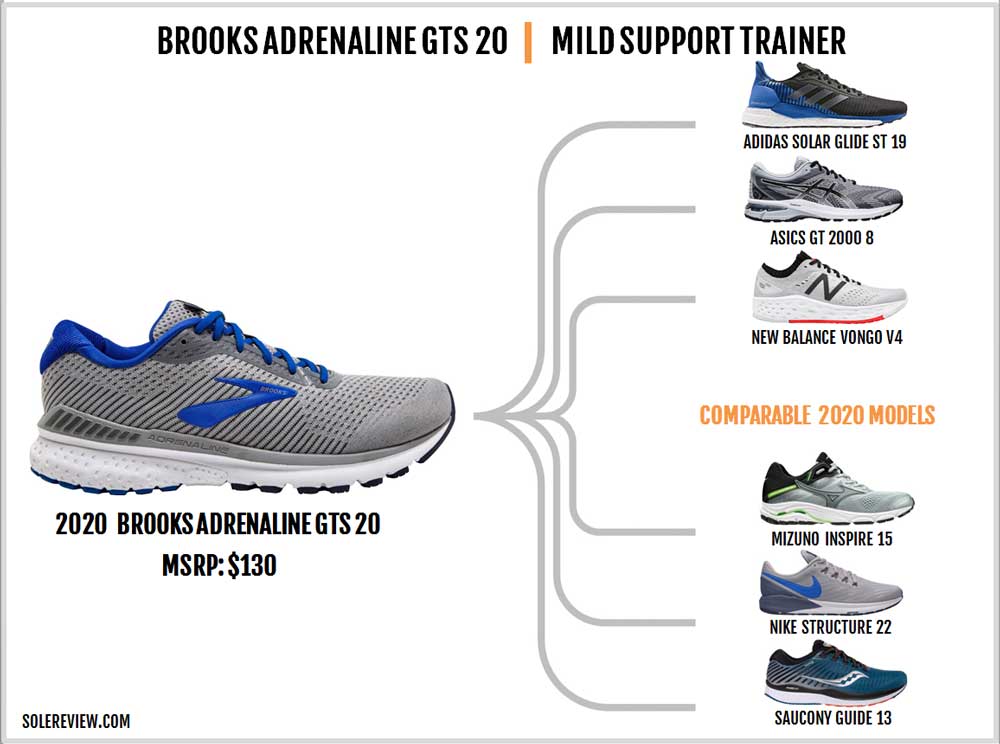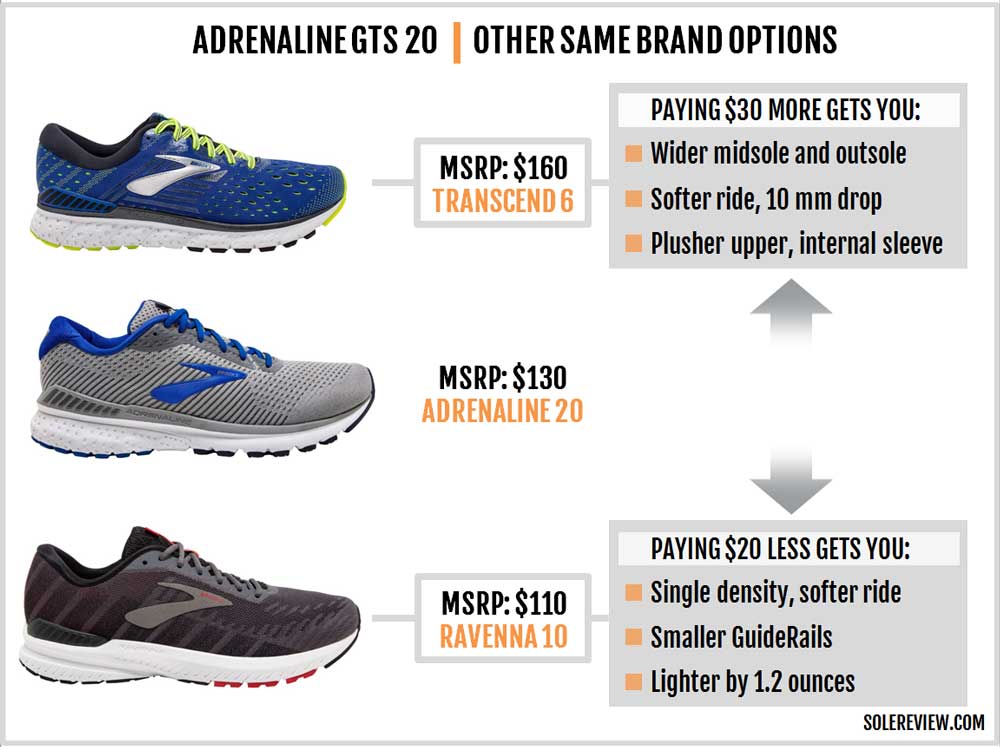INTRODUCTION
Have you read our review of the Brooks Ghost 12, a popular neutral trainer? We trust you have.
Now take the Ghost, raise the midsole sidewalls on both sides. And voila! That’s the Adrenaline GTS 20 for you, more or less.
That’s how much the Adrenaline has changed over the last few years. For those of you who don’t know what we’re talking about, the Adrenaline GTS 19 was the first version without a medial post. The GTS 20 is much like the 19 except for minor updates.
Up till the GTS 18, the Adrenaline was based on the traditional stability shoe template. The inner midsole had two densities of harder foam; the rest of the midsole was softer.
In theory, the said design slowed down the excessive inwards rolling (over-pronation) of the foot. In reality, a lot of it was just snake-oil marketing with unsubstantiated science.
Whatever the reason, the Adrenaline GTS 20 is the future of ‘stability’ shoes. At the same time, many runners prefer the feel of a firmer wedge. If so, then keep in mind that the GTS 20 and the 19 are nothing like the Adrenalines before them.
Otherwise, the GTS is a very comfortable neutral – uh, stability trainer that works for most runs except speed days. From a cushioning point of view, the GTS rides like the Ghost 12 – except for the cupped support near the top of the midsole.
THE BROOKS ADRENALINE GTS 20 vs. 19
If you already have a pair of the GTS 19, it’s not worth getting a 20. There are barely any differences – functionally speaking. Though the midsole and outsole are ‘new’ for 2020, the ride character is identical.
There are a few technical updates. The GuideRails are now a part of the molded midsole instead of being separate pieces. The outsole gets extra openings under the heel and forefoot.
On the upper, the exteriors are stripped of the high-density printing detail that was on the GTS 19. The mesh is softer, and so are the round laces that replace the flat kind used on the previous model.
These material changes make a difference in the overall weight, so the new GTS is lighter by half an ounce.
The heel collar is made of two different linings now. Brooks brings back the Achilles dip design from the Adrenaline 14 versus the single lining collar from the GTS 17-19.
The price stays the same.
THE RIDE EXPERIENCE
This is not your typical ‘stability’ Adrenaline experience. Not anymore.
The GTS 20 (and the 19) are devoid of a medial post – the firm wedge of foam that is commonly seen in motion-control or stability running shoes. So if you want a running shoe with a noticeably harder medial side, look elsewhere.
One of the things that stood out in the GTS 19 and the 20 is the relative softness as compared to the older models. We brought up the comparison with the Brooks Ghost 12 for a reason; the Adrenaline’s cushioning levels are similar.
The midsole is triple-density, with the main midsole being the softest. It is, in fact, slightly softer (around 10%) than the DNA Loft crash pad. This is interesting. Because past Adrenalines (18 and older) have had a harder inner midsole.
With a softer medial side, the Adrenaline GTS 20 is a reverse stability shoe and closer to the Ghost than it has ever been. The 12 mm drop midsole has plenty of long-mile cushioning in the front and rear, so no matter where you land, you’ll find comfortable foam padding under the foot.
That being said, the high heel-to-toe drop makes the GTS better for rearfoot strikers. (Related read: Best shoes for heel and midfoot/forefoot strikers)
There’s also a removable insole, a plush top cloth, and a foam lasting below. This is a standard fixture in most Brooks running shoes, and the reason for the cushy step-in feel.
Otherwise, the actual midsole isn’t very soft – regardless of the DNA Loft crash-pad. When compared to foams like the adidas Boost, Pwrrun, Reebok Floatride or even the Nike React, most Brooks running shoes are firmer. Even the Glycerin 17 with its full-length DNA Loft midsole isn’t as soft as Brooks advertises it to be.
If one looks past the raised midsole (Guiderails) sidewalls, then the Adrenaline is a supportive neutral running shoe. There’s nearly no bias. Even though the medial midsole is slightly softer, its solid sidewall design provides greater stability than the grooved lateral side.
The Guiderails work in the same way they do on the Transcend. They cup the foot on the sides, though the GuideRail acts as more of an under-arch support than anything else. The inner Guiderail is a firmer wedge that is co-molded into the softer foam.
The outer GuideRail is softer and has a decorative nature. The heel has a hard internal counter, so the Guiderail doesn’t add value other than visual symmetry. After all, the Adrenaline GTS 20 with a one-sided Guiderail would have been a hard-sell.
The outsole is nearly identical to the 19 so the transitions are equally smooth. There are no gaps under the midfoot so the loading experience is consistent. The forefoot has blown rubber with just the right level of flexibility.
There are a couple of full grooves along with a bridged one, so the midsole doesn’t bend every easily – which makes push-offs less of a chore. Brooks hasn’t changed its rubber formulation, and that means that you get decent traction under most surface conditions.
So who should buy the Adrenaline GTS 20?
This is a neutral shoe with a cushioned and stable midsole with a high level of under-arch support. As we said – this is akin to the Ghost with a boosted under-arch area. This is a very different product than the older Adrenaline(s) so know what you’re spending your money on.
The role of a daily trainer would be the best use for the Adrenaline. The midsole has lots of neutral-type cushioning without a firmer medial post so it is very comfortable even for high mileage runs. You can use it on the treadmills and flat trails too, but take note – running on muddy trails will clog the heavily grooved outsole.
It’s not the best product for speed work (7 min/mile or under 5 min/km or faster). There are better options like the snug Brooks Hyperion or the New Balance 1500V6 (or the 1400V6).
We’re spoiled for marathon shoe choices. Since the GTS 20 is, for all practical purposes, a neutral shoe, you can tap into something like the Nike Vaporfly (4% and Next %), Hoka Clifton 6 or the new Balance 1080V10.
Brooks doesn’t have a lightweight and responsive max-cushioning product. For whatever it is worth, models like the Glycerin 17 and Transcend give a higher level of high-mileage comfort.
Well, you might say that the 1080, Glycerin, and the Hyperion are neutral shoes. So what business do they have rotating with a ‘stability’ shoe like the Adrenaline?
The truth is, the GTS isn’t the product it once was. In its current form, the Go-To-Shoe is merely a neutral running shoe with high sidewalls.
The DNA foam – both in its BioMogo and Loft avatar – doesn’t have a lot of spring-back cushioning. Neither is it soft; even with the recent weight reduction, the Adrenaline still tips the scale at over 10-ounces. The Levitate is fun, but isn’t without its drawbacks.
In simple words, DNA delivers an old-fashioned ride experience. It is comfortable, smooth, and consistent, but it doesn’t go over and beyond. On the other hand, you have Saucony and Reebok steamrolling the competition with their Pwrrun and Floatride midsole tech.
IS THE BROOKS ADRENALINE GTS 20 DURABLE?
Brooks does a great job of cobbling together dependable (but rather bland) running shoes, and that road eventually leads to durable products.
400 miles is a reasonable ask of the Adrenaline. Save for the normal wear and tear, expect no unpleasant surprises.
THE UPPER DESIGN AND FIT
The Adrenaline GTS 20 sells in four widths, ranging from a B (narrow) to 4E (Extra Wide). In its D (standard width) version, the upper fits true to size with just-right interior proportions.
There’s enough space above and in the front of the toes. The forefoot is accommodating. The new mesh has a softer feel over the foot, and the lack of a sleeve results in decent ventilation levels.
The upper is almost one-piece – the arch side has a thicker mesh with fused reinforcement and Brooks logo. It works together with the midsole GuideRail wedge to make the under-arch area more supportive. This is new for the 20; the 19 had no such thing.
The exteriors look less busy than the GTS 19. The high-density printing that was on the 19’s rear quarter panel is removed. The interior feel hasn’t changed much – the seamless construction makes for a smooth inner feel.
A padded tongue prevents any lace bite from happening. Although, there’s a lower chance of that happening on the 20 as it swaps the flat laces with soft round ones. This change is a throwback to the Adrenaline 14 – all versions after it had flat, ribbon-like laces.
The laces aren’t the only bits the 20 has picked from the 14. Even the collar reverts to the dual-fabric design. The Achilles dip has a ribbed textile for grip and is joined to the rest of the collar with an invisible seam. This construction makes the collar slightly more accommodating for a conforming fit.
The heel doesn’t slip – the hard internal counter and the padded collar keep it locked in. There’s also an extra row of heel lock lacing when you need it.
Reflectivity is present in the front and rear. A sizable piece is placed over the heel and there’s a shiny strip over the forefoot as well.
PROS AND CONS
Except for the bland ride quality and the 10-ounce+ weight, the Adrenaline GTS has very few flaws. The midsole has respectable levels of stability and cushioning that is versatile enough for daily training or long runs. This isn’t a shoe that works for speed runs, so look elsewhere if that’s what you need.
The upper fit is typical Brooks – padded, smooth, and true-to-size along with a smooth interior.
The lack of a medial post on the GTS 20 (and 19) isn’t a negative per se. And yet, there will be runners who will be disappointed at the Adrenaline joining the neutral running camp.
SHOES SIMILAR TO THE BROOKS ADRENALINE GTS 20
This is where it gets interesting. The Adrenaline GTS 19 and 20 are no longer members of the medial-posted shoe community. Their current persona has a very neutral guise, so it makes sense to compare the 20 with similar products.
The adidas Solar Glide ST 19 is a softer and more responsive running shoe with a wee bit of medial side support. The New Balance Fresh Foam Vongo V4 and Mizuno Inspire 15 also delivers a supportive ride without a medial post.
It’s worth pointing out that the Vongo has a 4 mm drop along with deep cushioning, so it is a better shoe for forefoot strikers than the GTS 20. If the Skechers GoRun Forza is available in your location, that’s an option too.
The Saucony Guide 13 is undecided on which way it wants to go. It hasn’t gone the full neutral-supportive route but doesn’t feature a firmer foam wedge either. Meanwhile, the plastic stabilizer (inspired by the Liberty) on the inner midsole is a happy compromise.
On the other hand, running shoes with conventional medial posts still exist. Take your pick from the dependable Asics GT-2000 8, the New Balance 860 V10, and the Nike Structure 22. The Nike stability shoe hasn’t been updated in a while, so we have a feeling this will be the last of its kind from the house of Swoosh.
THE BROOKS ADRENALINE GTS 20 vs. RAVENNA 10 vs. TRANSCEND 6
Though the Beast and Addiction still have a traditional medial wedge, three of Brooks’s popular staples have switched to the GuideRail form factor.
The Transcend was the original GuideRail shoe, and it continues – albeit in a toned-down avatar – in the form of the cushioned and supportive Transcend 6.
Priced below the Adrenaline is the Ravenna 10. Like the GTS 20, the Ravenna sports a couple of supportive GuideRails but minus the bulk. It’s more than an ounce lighter and a softer, more compliant ride character.

